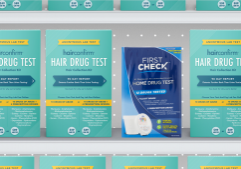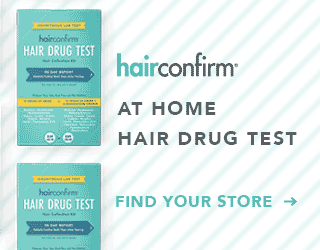Teenage Drug Use: Statistics and Prevention
Overburdening homework, sleepless nights and the desire for a thriving social life are only a few reasons why teenagers turn to drugs. Adolescent drug use offers the illusion of authority; in reality, substance abuse is a distraction from having adult responsibilities.
Drug dependency among teens is the result of poor coping mechanisms and a weak support system. Concerned parents, guardians and counselors should recognize symptoms of drug abuse and intervene as soon as possible.
Teenage drug use statistics apply to youth aged between 12 and 18. The average initiation age of drug intoxication is 16, which falls somewhere in the middle of high school.
In school settings, drug abuse must be targeted head-on. Students are more inclined to express curiosity about drug use when they are in a safe, liberal environment. Teenagers deserve to have their concerns validated by educational professionals, as this encourages them to cultivate strong social networks in the classroom. Teachers, counselors and trustworthy friends are important when a teenager feels at risk of abusing drugs.
The SAMHSA 5 common drugs of abuse trickle into the school system because they are inexpensive and widespread:
- Amphetamines
- Cocaine
- Marijuana
- Opiates
- Phencyclidine
Marijuana may be the most prevalent high school drug due to popular culture references and recent law amendments. 35% of all 12th graders in the United States have either tried marijuana, or have used it regularly. Despite its legalization, marijuana use as a teenager doubles the risk of developing depression and anxiety in later years.
Stunted brain development caused by early marijuana use affects memory, attention span and reasoning skills. Teenage marijuana use also increases the rate of intoxicated driving accidents, which are the leading cause of teen mortality in the U.S. One sobering statistic suggests up to 14% of teenagers who are injured or die in a traffic accident test positive for THC.
In addition to marijuana, opiates and prescription drugs are popular among teenagers. Over-the-Counter medications can be acquired from pharmacies, department stores, or more likely the home medicine cabinet. In fact, teenage prescription drug abuse is rampant because of the ease at which prescribed opiates are diverted through friends and family members. 70% of teens abusing prescription drugs admit they were obtained through family or friends. The most frequently prescribed opiate medications include:
- Hydrocodone
- Hydromorphone
- Oxycodone
One-third of teenage prescription drug abuse cases are the result of having leftover opioids from past personal prescriptions. Some teens may end up sharing or reselling these drugs. Improper instruction of opioid use leads teenagers to take larger than necessary dosages because of the uncertainty of effectiveness.
Young people aged 12-20 are responsible for nearly half of all emergency room visits for prescription drug abuse. Uncontrolled administration of these highly addictive substances can compromise growth and school performance. Fortunately, Prescription Drug Monitoring Programs across the country prevent these problems from escalating.
Experimenting with drugs ahead of full brain maturity increases the risk of behavioral issues. Since the brain is not entirely grown until the early twenties, it is paramount for teenagers to abstain from drug experimentation.
Cognitive and physical changes are the result of ongoing drug abuse. Often, improper influences are the catalysts triggering addiction. Teens who abuse drugs give off various warning signs:
- Change in peers and attitude
- Careless hygiene
- Declining academic performance (poor grades, skipping school, detentions)
- Loss of interest in activities
- Trouble with law enforcement
- Unusual eating or sleeping habits
Dependency compels teenagers to focus their energy towards acquiring illicit substances; in turn, they lose interest in formerly enjoyed activities. By constantly adopting stimulating hobbies, teenagers can occupy their schedules and prevent themselves from delving into drug abuse.
Teens with substance abuse problems eventually find themselves alone and unable to confide in someone they trust. In this case, it is in their best interest for guardians to arbitrarily conduct a hair follicle exam.
Can Hair Follicle Drug Testing Identify Teenager Substance Abuse?
Teenage drug use is detectable through a hair follicle drug test. As a concerned parent or counselor, identifying traits of teen drug abuse is the first step to keeping adolescents on the path to success.
Hair drug testing is effective up to three months after an incident of drug abuse. These tests are applicable in school settings, juvenile detention and rehab centers, or at home. If parents suspect their child has a drug addiction, they are legally permitted to acquire a hair sample and screen their child without consent. Positive test results are stored for three years in a confidential database, and results are only released to whoever signed the required Chain of Custody form.
Hair is touted as one of the most effective specimens to drug test for several reasons:
- Hair specimens have an extended detection window
- Hair is easily acquired and is a non-invasive form of testing
- Perfect for measuring timeline of sobriety
Teens undergoing rehabilitation, or considering experimentation can refer to “HALT”, which stands for Hungry, Angry, Lonely and Tired. This acronym should be taught in home and school settings to remind teenagers to properly handle their emotions. When experiencing any of these feelings, it is important to recognize and accept them immediately. It also helps to convey these sensations to a trusted loved one who can guide teenagers through their experience.
Fortunately, statistics show that teen drug use is steadily declining, likely because of awareness of the harmful effects of drugs. Teenagers are more savvy and informed thanks to the internet. Once enough courage is summoned to quit drugs, teens immediately notice improved mental and emotional activity. The risk of teenage drug abuse is mitigated when positive relationships are nurtured. There are many healthy distractions to protect teens from the negative aspects of adolescence, and none of them involve teen drug use.
Support
Ordering
About Us
Connect
Confirm BioSciences.
© 2019 Confirm BioSciences, Inc.
All Rights Reserved. See our Terms & Conditions and Private Policy.



